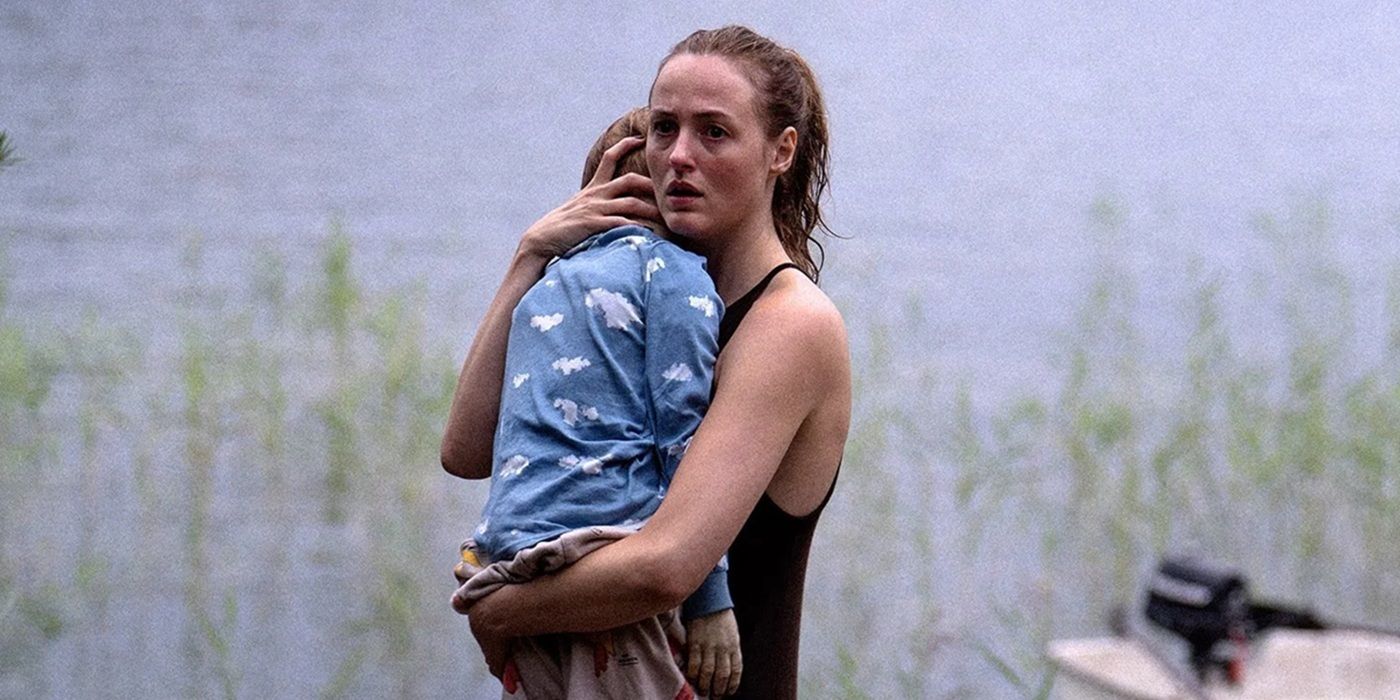
Zombies don’t always have to be a source of pure terror or even a metaphor for racism, consumerism, or other big social issues.. Films like Maggie and Handling the Undead have proven that they can serve as a framework for meditations on love and death (not so much robots, though). Handling the Undead, based on a book by John Ajvide Lindqvist, author of horror cult favorite Let the Right One In, shows multiple views of how people “handle” loss and grief by following the experiences of three different families as their deceased loved ones inexplicably come back to some sort of life. But this isn’t an apocalyptic plague, and there’s no cause for people to hide out in a mall while ravenous monsters break down the doors. While the film does have some unsettling imagery and beautiful but bleak cinematography, it’s not so much a traditional horror film as it is a haunting, family drama about grief that just so happens to feature zombies.
The Zombies in ‘Handling the Undead’ Are Disturbing – But Not Very Violent
Almost every zombie movie treats the appearance of the undead as a plague or an outbreak, but in Handling the Undead, the zombies don’t appear to be infectious or even hostile, at least at first; their origin is left vague in favor of a more emotional exploration of their reappearance. After the initial catalyst, whatever it was, the movie follows three of the undead and their families: Elias, a young boy who presumably died a few months earlier and is mourned by his mother, Anna, and her father, Mahler; Elisabet, whose life partner, Tora, buried her on the day of the supernatural event; and Eva, a wife and mother of two children who died only hours before the event in a car crash. Each family unit experiences a different process of understanding the situation, which is represented in part by how different each of their returned loved ones look, despite all clearly being undead.
Elisabet presumably died of age-related complications, as she and her partner appear to be well into their 70s, so she’s the most “lively” looking of the zombies, so to speak. Eva has a more upsetting appearance despite being more recently dead because her injuries from the car crash that killed her are fairly severe. But it’s Elias who is the most unnerving, not just because of his tragically young age but because he’s been dead the longest. His skin and limbs are gray and stiff with decay, so much so that he can barely open his eyes. The practical effects are extremely unsettling; he looks like a mix between a puppet and someone wearing heavy prosthetics. Even when some zombie munching happens towards the end of the movie, this stiff, dead-eyed boy, no more than seven or eight, with his gaping but silent mouth, is the most disturbing part of Handling the Undead – but that’s not to say his story is the most horrific. Just as they all look a little different, the zombies’ stories are also varied and explore different aspects of grief.
‘Handling the Undead’ Views Death Through a Haunting and Moving Lens
Aside from the uncanny valley nature of Elias, Handling the Undead isn’t too concerned with the horror aspect of its zombies; their main purpose here is to let the audience view death and mourning from new angles. After some initial confusion and even fear, each family in the movie attempts to reestablish the connection that they had while their loved ones were still really living. It’s a harrowing process for all of them, but they all have their own unique outcome. After much confusion and lack of contact with Eva while the hospital keeps her under observation, all her return as a zombie does is painfully delay their inevitable grief, as well as force them to witness her in a more disturbing state than simple death. Tora, meanwhile, is immediately relived by the sight of Elisabet, and tries to go back to their former life together as if she never died, but this too takes a turn for the worse.
It’s Anna who has the closest thing to true closure. Despite the fact that her son shows little response to her or her father’s care, and even though the more traditional violent zombie behavior does begin to make an appearance late in the film, spending time with Elias, even as a zombie, seems to give Anna a focus point for handling her sorrow. Once it becomes clear that this state of existence isn’t sustainable for either of them, she peacefully tells her returned son that she loves him and will “see [him] later” before…well, we’ll just say before letting him go. It’s a heart-wrenching scene, but it implies that by letting her son go instead of clinging to a mere shadow of him, Anna has reached the acceptance stage of her grief. Unlike Eva’s family and Tora, Anna is able to come to that acceptance gradually, leaving the small hope that she’ll be able to move forward with her life better than she’d been able to before.
Even with the overall bleakness of the movie’s story and visual style, Handling the Undead isn’t outright scary, and some may find that it’s too much of a slow-burn. However, it effectively touches on some realistic fears in a unique way that fans of atmospheric horror will likely appreciate – and zombie fans looking for a fresh take on the subgenre might, too.









